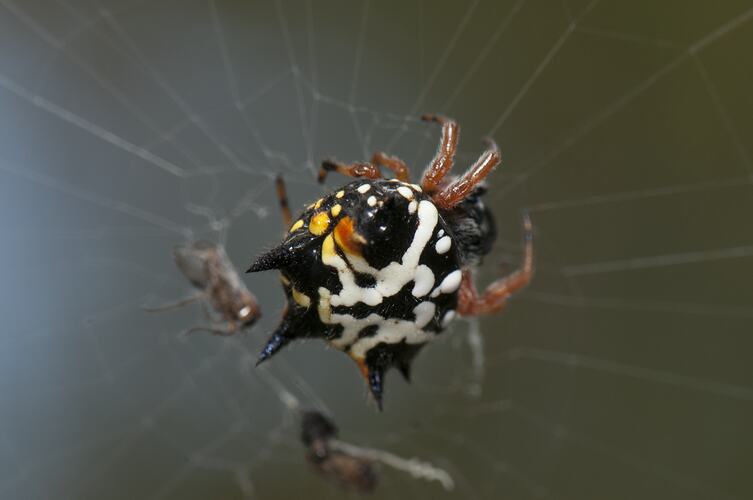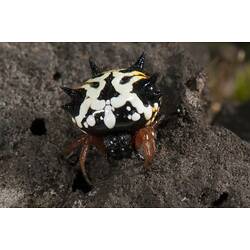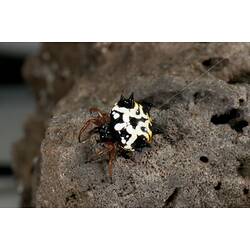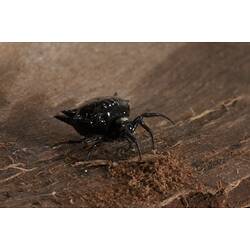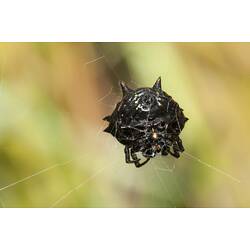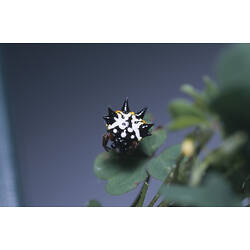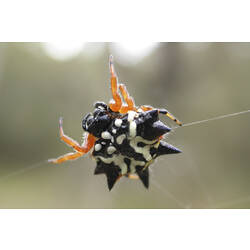General Description
Cephalothorax black and legs orange; abdomen shiny black with a yellow and white pattern of variable extent and six large spines. Sometimes completely black. Body up to 3 mm long (male), 1 cm long (female).
Biology
These spiders form colonies where each spider makes its own individual web. The webs are laced together with silk to become one large structure, capable of covering entire bushes and causing annoyance to bushwalkers.
Distribution
Mainland Australia and Tasmania.
Habitat
Shrubby woodlands.
More Information
-
Animal Type
-
Animal SubType
-
Brief Id
Six triangular spines on the abdomen.
-
Colours
Black, White, Orange
-
Habitats
-
Where To Look
-
Diet
Insects
-
Hazards
Rarely bites. Local reaction if bitten (may include redness, swelling, burning or itching at site of bite).
-
Endemicity
-
Conservation Statuses
CITES: Not listed, FFG Threatened List: Not listed, EPBC Act 1999: Not listed, IUCN Red List: Not listed
-
Web
Web
-
Taxon Name
-
Scientific Author
(Thorell, 1859)
-
Common Name
Spiny Spider
-
Other Names
Jewel Spider
-
Kingdom
-
Phylum
-
Class
-
Order
-
Family
-
Genus
-
Species Name
minax
